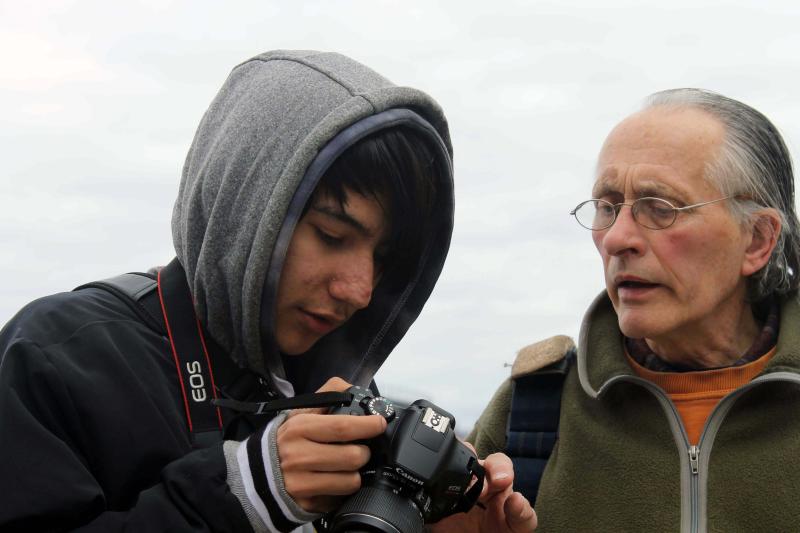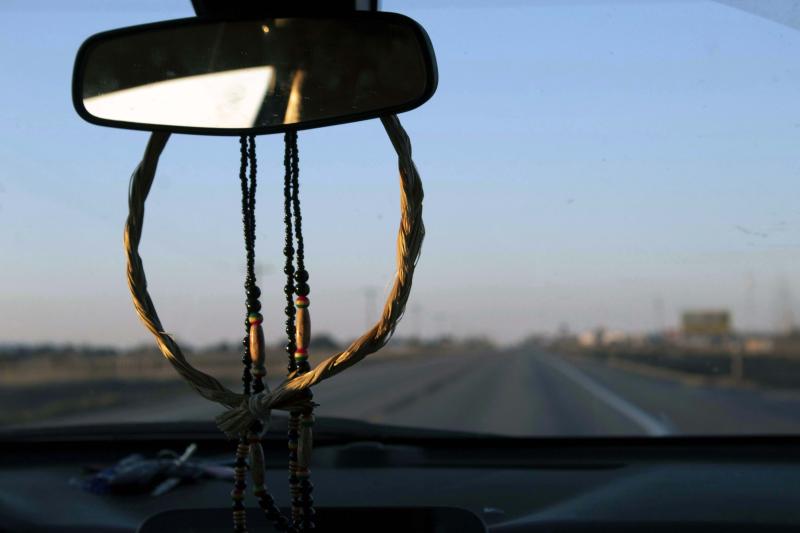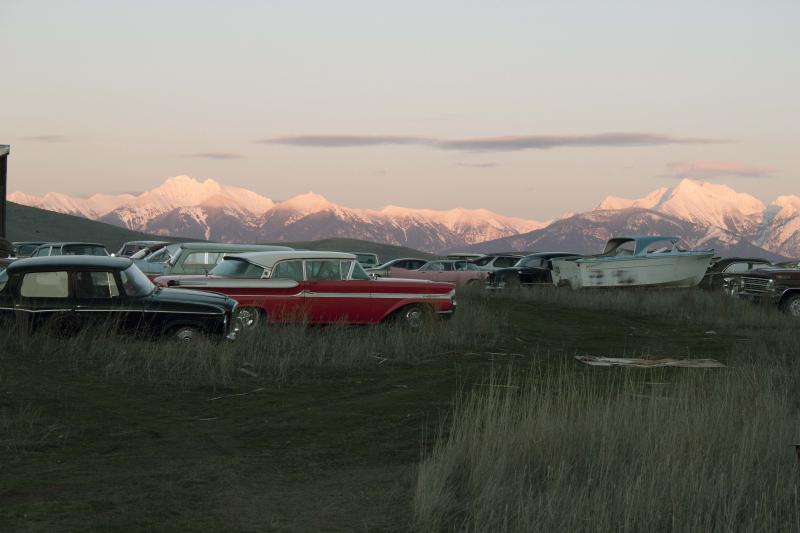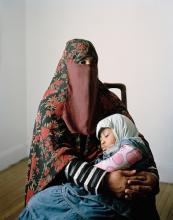Grant Spotlight: A VOICE

Student Sean Trahan (left) and teaching photographer and A VOICE Director David J. Spear (right), working in the field, April 2023. Photo by Malacye Piapot
Located in the Flathead Nation, a reservation north of Missoula, Montana, and south of Kalispell, A VOICE is a community arts education program serving primarily Native students from the Confederated Salish and Kootenai Tribes. Under the direction of photographer David J. Spear and his wife Jill Erickson, students learn about the history of photography, immersing themselves in different eras and genres of the art form, as well as gain hands-on experience in creating their own work. As Spear described, “We spend quite a lot of time looking at documentary photographers and portrait photographers and sports photographers and asking them, ‘What do you want to make photographs of?’” The students also learn to edit and print their work, and each session culminates in a show that is open to the community. “We try to bring them through that whole process of what an artist goes through.” Students also have an opportunity to visit photography collections, both locally and outside of the state. We spoke with Spear, who was recently honored by the tribal council for more than two decades of work on the reservation, about starting the program and the challenges and opportunities of running a rural arts program.
NEA: How did A VOICE get started and how do you describe its mission?
DAVID J. SPEAR: I was at the International Center of Photography in New York City for a long time and developed a community outreach program, which essentially went into underserved neighborhoods in the city. My wife and I built this program through the museum. In 2000, we decided to move out [to Montana]. My wife is from the area, and she said to me that it might be interesting to try to do this kind of programming out where she was raised, because there really wasn't anything that was like this available at the time. It was a scary transition, in the sense that we weren't quite sure how to navigate the [program]] funding part of it. We decided we wanted to do a program with the tribal school, and I told them I had this background and of wanted to work with them. They said, “Come on in. Let's do it.” In 2006, it got to a point where our program was building, and we started our own nonprofit, which is A VOICE. A VOICE stands for Art Vision & Outreach in Community Education; that's essentially, what our mission statement is.
NEA: What makes photography a good vehicle for getting young people engaged in the arts?
SPEAR: One of the things that's empowering about photography, in terms of art and outreach, is that if we can get young people to see themselves in the same frame that they see people that they care about, or people that that are important to them either on the television screen or movie screen, it brings an empowerment aspect to who they are as well. Because the culture here is focused on the Indigenous connection to the land, I was coming out of New York wanting to get folks to photograph themselves, and they were much more interested in photographing the landscape and the culture from a distance. So I developed an assignment specifically for that idea, asking my students to do a self-portrait in landscape. That way we were able to start to move that idea that you're also important in the frame. You as a person are really important. [We are] talking about picture making and sharing images of great photographers with them, but also then saying, “Okay, what's your viewpoint? What's your vision?” I also believe that [each individual] vision is very unique. One of the reasons I'm so excited about teaching photography is that we can see a young person's vision pretty quickly in the kinds of pictures that they are making. We can see the way they see the world.

NEA: In addition to literacy and skill with photography, what other skills do you think students develop through engaging with the arts?
SPEAR: I have one student this term who is really interested in doing portraits of his friends. One day he said to me, “What do I have to do to become a portrait photographer?” I was able to follow up with him and say, “Here are strategies that you can do to do that. Do you want to study? Do you just want to go out in the world and start doing this on your own?” [I was able to give] that particular student different focuses in terms of how he might go ahead. We had another student who was really interested in telling stories with her photographs. So we talked about the idea: do you want to go to journalism school? Do you want to see your prints online? Do you want to see pictures printed in magazines and newspapers? What do you what do you think about that? In all these cases, what we're trying to do is say [to the student] that you're qualified to do this if you get serious about it, and if you really follow through and work hard at it. I think that that's in addition to the art aspect that we're providing in terms of learning.
NEA: What are some of the challenges and opportunities of running A VOICE?
SPEAR: By the time funding gets out to places like here, we have less because we're a smaller organization and because we are “at the end of the road.” When we go to private foundations, they'll fund us for a year or two, and they'll say, “Okay, we've done enough.” Before we got our recent NEA grant, we were essentially donating our services to the nonprofit. The way I would get paid is we would write a grant for my teaching time, and then that's the salary. But every year, we would have to go back and try to find another source. One of the things I learned a long time ago was, in serving the needs of the students, if I say that I'm going to be there at two o'clock in the afternoon for class that I'm going to be there [at that time] all year, whether I'm getting paid or not, because we are programmed as a constant in their lives. Many of our young people don't have [anything] constant going on.
The thing I can say proudly, for the 20 years that we've been doing the project in the school, is that we've been there and the students have responded. What's incredible is that we have a very important, unique situation where, for 20 years, this Indigenous community has been photographed by people from this community. And I think that that's an incredibly powerful document that they made. We've actually saved the negatives and our digital files for two reasons. One is if a student wants to come back and print from their work or wants to have access to their work, we know that it's in a safe place. Two, the tribes are getting to a point where they're ready to create a building that is safe for photography and collections. We’ll turn the whole archive over to them once their facility is in place. I think that would be a really important thing, to have Indigenous history and art history majors, and other people come and curate shows out of the work.

Old Cars. Our Community Record Two Eagle River School project. Photo by Meira Swaney





